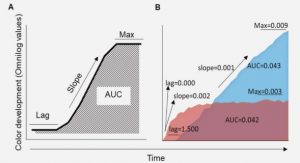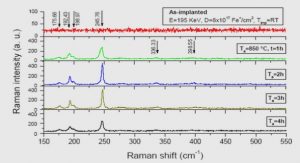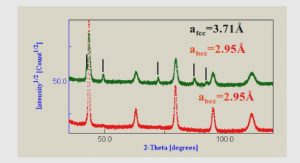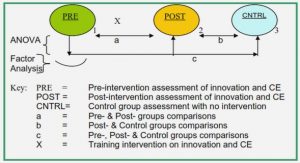Get Complete Project Material File(s) Now! »
Identification of 6mA and 5mC in the genomic DNA of G. intestinalis.
In order to study DNA methylation in Giardia we used dot-blots to detect 6mA and 5mC modifications in different strains of G.intestinalis from both assemblages A and B. The NF and WB strains, which are both from assemblage A, and the GS and H3 strains, which are both assemblage B isolates, were used in the study. We first extracted genomic DNA (gDNA) from NF, WB, GS and H3 trophozoites grown in vitro (Figure 1A). Antibodies specific for the 5mC and 6mA modifications were used in dot-blots to assess the presence of the modifications. Before the experiment, we tested that the antibodies specifically recognized the two modifications using DNA from mouse cells (low or no 6mA-high 5mC) and Drosophila DNA (low 6mA and no 5mC) (Sup. File 1). The 5mC and 6mA DNA methylations were detected in gDNA from trophozoites of both assemblage A and B, but the strongest signal was obtained from the assemblage A strains (Figure 2A and B). The antibodies also recognize RNA modified by 5mC and 6mA but when extracted RNA from the WB trophozoites (Figure 1B) was tested we did not get any signal (Figure 2). DNA was also extracted from WB cysts and the level of DNA methylation was compared to DNA from trophozoites. This showed that both trophozoites and cysts contain methylated DNA (Figure 2C and D) but there were no major differences in intensity. However, when a time course was done during encystation variable levels were detected (Sup. File 1).
We also used immunofluorescence microscopy (IFL) to investigate the presence and localization of 5mC and 6mA in Giardia WB trophozoites and cysts (Figures. 3 to 6). The 5mC signal co-localize with the nuclei (DAPI-stained) in the trophozoites with and without RNase treatment (Figure 3A and B). The signal appears to be more focused in the RNase-treated cells (Figure 3B). Cysts are also stained in the four nuclei with and without RNAse treatment (Figure 4A and B). Many cysts are not stained, either reflecting lower levels or problems with penetration of antibodies into the cysts (Figure 4). Staining of trophozoites and cysts with the 6mA antibody (Figures. 5 and 6) suggests that there are 6mA modifications in both DNA and RNA in the WB strain since there are signals emanating from the cytoplasm when the cells are not treated with RNase (Figure 5A) and a co-localization with the nucleus when treated with RNase (Figure 5B). 6mA detection in cysts was not convincing since most of the antibody seem to have gotten stuck in the cyst wall (Figure 6). To conclude this section, our data suggest that there are 5mC and 6mA DNA modifications in Giardia DNA. In contrast to other eukaryotes, unreported data suggest that, the level of 6mA might be higher than 5mC. Parasites from assemblage A have more modified DNA than assemblage B isolates.The modifications are found both in the trophozoite and cyst stages but changes in levels occur during encystation. We did not detect any RNA modified with 5mC but for 6mA we have conflicting results: dot blots show no signal whereas IFL with and without RNase treatment suggests that there is 6mA modified RNA in Giardia.
Identification and localization of putative methyltransferases in the WB strain of G. intestinalis
Our data suggest that there is DNA methylation in Giardia. DNA methylation has also been found in other pathogenic protozoa like Plasmodium and Trichomonas27,39. However, the enzymes introducting these modification have not been identified. In order to try to identify putative DNA methylases, we performed bioinformatic mining of the recently completed Giardia WB genome40. In total 59 genes in the WB genome encode proteins with domains that are similar to DNA or RNA methylases (Sup. File 2). The reason to look at both DNA and RNA methylases is that many RNA methylases also have some DNA methylase activity41. In the analysis we looked for structural similarities to known DNA methylases, expression levels during different conditions, conservation between assemblage A and B and also with another Giardia species, G. muris. We also modeled the structure of a selected number of putative DNA methylases to look for structural conservation. In the end, six putative methyltransferase genes in WB strain of G. intestinalis were chosen to be studied further by cloning the genes into the pPAC vector under the control of their promoters. The vector introduces a C terminal HA tag for localization studies by IFL(Table 3). The constructs were transfected into trophozoites, stained using anti-HA antibody, and localized by IFL (Figure 7). GL50803_1902 is a small (219aa) hypothetical protein with an S-adenosyl-L-methionine (SAM) dependent methyltransferase domain (IPR029063) found on chromosome 5 down-stream of another putative DNA methyltransferase, GL50803_1903, in the WB isolate. It is syntenic with orthologs in the assemblage B isolate GS and assemblage E isolate P15. The gene is expressed at a constant level throughout encystation. Analysis of this protein using a profile Hidden Markov Model (HMMer) indicates that it has a methyltransferase domain weakly similar to release-factor glutamine methyltransferase in Nitrareductuctor pacificus. Structural modeling using iTASSER identified this protein as similar in structure to the 6hidA crystal structure of C21orf127, a human histone methylase in a complex with SAH, but again, the score is low. Thus, this is a small protein unique to Giardia with a methyltransferase-like domain. Localization of this protein indicated that the protein is mainly found in the nucleus but also in the cytoplasm of the parasite, as shown in Figure 7.
GL50803_1903 is another small protein (220aa) annotated as a DNA methyltransferase with a very low isoelectric point of 4.8. It is found on chromosome 5 together with GL50803_1902 in Giardia’s genome, and there are syntenic orthologues in assemblages B and E. Similar proteins can also be found in the other diplomonad parasites G. muris and Spironucleus salmonicida. The expression of this gene is relatively low, but it is expressed throughout the life cycle. Structural modeling using iTASSER indicates that the protein has structural similarity to 6hidA as above but also to the human m6A methylase N6 AMT1. We could not successfully localize this protein, even though the epitope-tagged protein was successfully transfected into the parasite (Figure 7). This can be due to over-expression problems since this is usually a protein with low expression in Giardia.
GL50803_8691 is a slightly larger, 39kDa protein annotated as a tRNA adenine methyltransferase subunit. There are syntenic orthologs in assemblage B and E isolates and similar proteins are found in S. salmonicida and G. muris. Transcriptome and proteome data show low expression throughout the life cycle. Structural modeling using ITASSER indicates that this protein has a structural similarity close to the 5CCB crystal structure of tRNA (adenine(58)-N(1))-methyltransferase catalytic subunit TRMT61A. Analysis using profile Hidden Markov Models (HMMer) also indicates that the protein has a SAM-dependent methylase domain and a GCD14 domain. The cloning of this gene failed.
GL50803_21512 is a 291aa basic protein annotated as a putative S-adenosylmethionine-dependent methyltransferase. This gene is also found on chromosome 5 in the Giardia genome. There are syntenic orthologs in assemblage B and E isolates, and similar proteins are present in S. salmonicida and G. muris. Transcriptome and proteome data show low expression throughout the life cycle. Structural modelling using iTASSER show structural similarity to human 18S rRNA (guanine-N(7))-methyltransferase and yeast putative methyltransferase BUD23. Biosequence analysis using profile Hidden Markov Model indicates that the protein has a SAM-dependent methyltransferase domain. Localization of these proteins in the WB strain of G. intestinalis using IFL showed that the protein is found in the nucleus as it completely overlaps with the DAPI, as shown in Figure 7.
GL50803_100959 is a 323aa acidic, hypothetical protein. This gene is found on chromosome 4 in the WB assemblage A of G. intestinalis. There are syntenic orthologues in assemblages B and E. Similar proteins can also be found in the other diplomonad parasites G. muris and Spironucleus salmonicida. The expression of this gene is relatively low but it is expressed throughout the life cycle. Biosequence analysis using profile hidden Markov model shows that the protein has a SAM dependent methyltransferase and lysin methyltransferase domains. iTTASSER modeling indicates that the protein has a structural similarity to the 4qpnA crystal structure of human protein-lysine methyltransferase METTL21D. We could not localize this protein in G. intestinalis since transfections failed.
GL50803_100887 is annotated as a 416 aa putative methyltransferase in the WB genome. It has not been localized to a specific chromosome, but it is very similar to the putative methyltransferase GL50803_103058 on chromosome 2 (2 internal amino acid changes). In another assemblage A, B and E Giardia isolates there are also two very similar or identical copies of this putative methylase. Even if it a multi-copy gene the expression levels are very low. Biosequence analysis using profile hidden Markov model shows that its protein has FtsJ domain. Structural modelling using iTASSER suggests that it is similar to the structure 4N48, human Cap-specific mRNA (nucleoside-2-O-)-methyltransferase 1. This protein localizes in the nucleus as shown in Figure 7.
Screening of methylation targeting drugs active against Giardia
One major quest of this project was to detect methylation in Giardia. The other primary goal was to screen if methylation targeting drugs can be used as an alternative treatment for giardiasis. New drugs are needed due to the problem of slowly increasing resistance of the current treatment options9. To test these drugs, we challenged G. intestinalis trophozoites from the WB strain with two different methylation targeting drugs: 5-aza-2’deoxycytidine and 5-azacytidine. We established the drug concentrations needed to inhibit the cells by 50% (IC50). 5-aza-2’ deoxycytidine has a significant effect on the parasites (Table 4), generating an IC50 of 1.46±0.14 μM. Thus, the IC50 is lower than the currently used drug metronidazole that has an IC50 of 5 µM42. On the contrary, 5-azacytidine is less effective (Table 4), with an IC50 value of 111±24 µM.
Table of contents :
Abstract
List of abbreviations
Chapter 1. Introduction
1.1 Aims of the study
Chapter 2. Materials and methods
Chapter 3. Results
3.1 Identification of 5mC and 6mA in the genomic DNA of G. intestinalis
3.2 Identification and localization of putative methyltransferases in the WB strain of G. intestinalis
3.3 Screening of methylation targeting drugs active against
Chapter 4. Discussion
Acknowledgement
References






